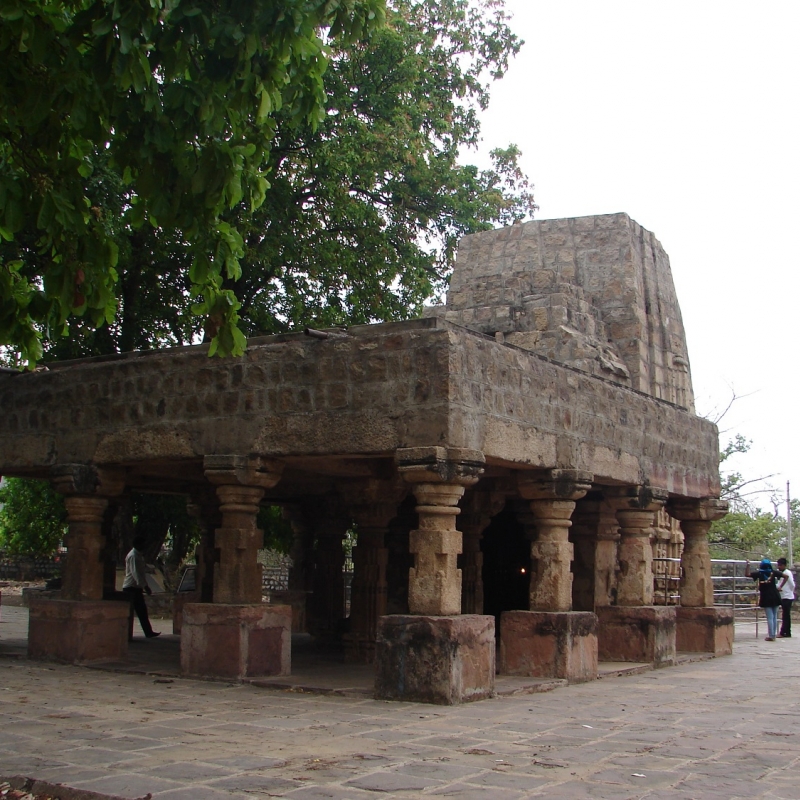In close proximity with Bhoramdeo and Cherki Mahal, Madwa Mahal is an east facing brick shrine built in the early Nagara idiom.
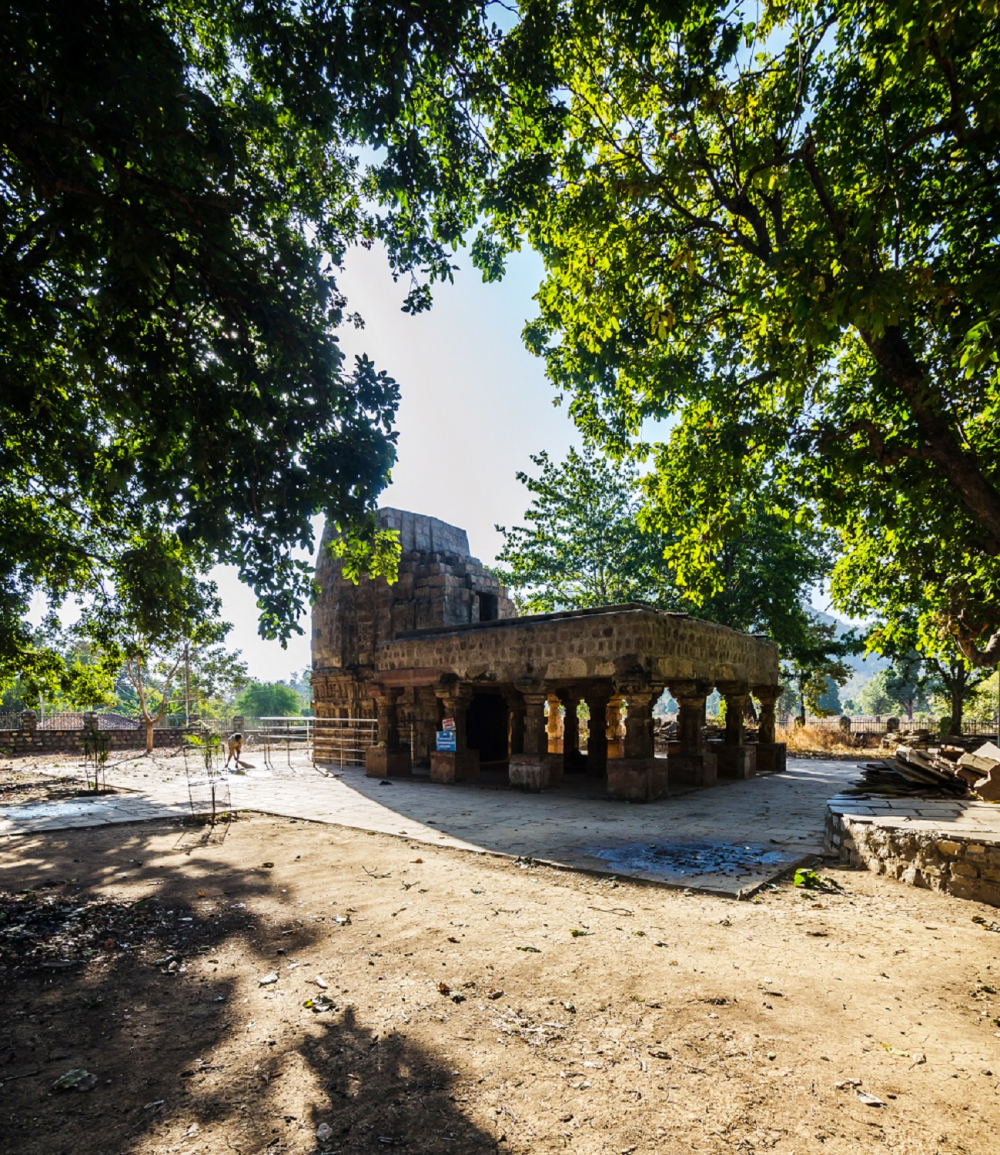
Kawardha. Madwa Mahal. South View. Photo Credit: Anzaar Nabi
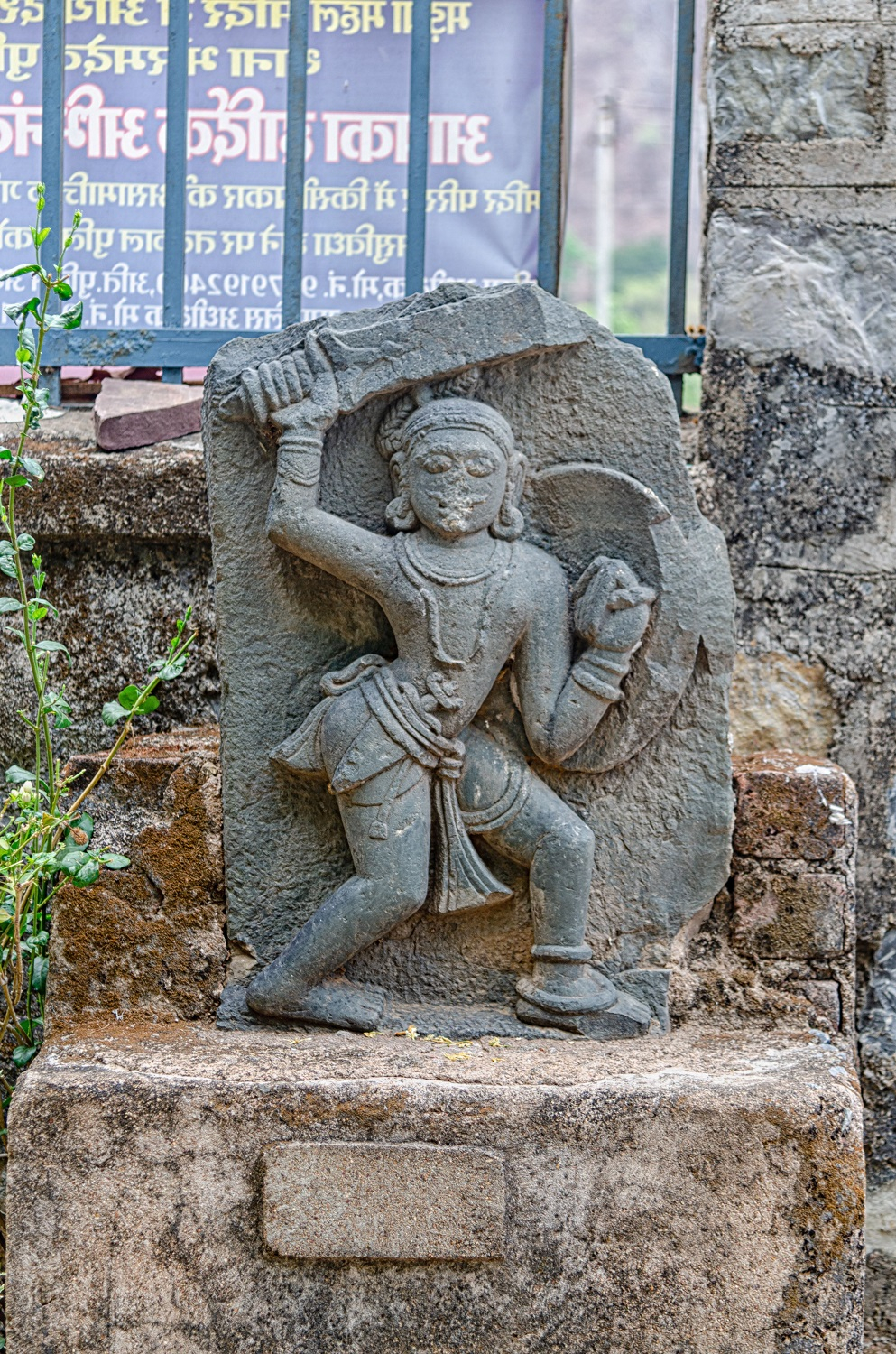
Madwa Mahal, Hero Stone. Photo Credit: Anzaar Nabi
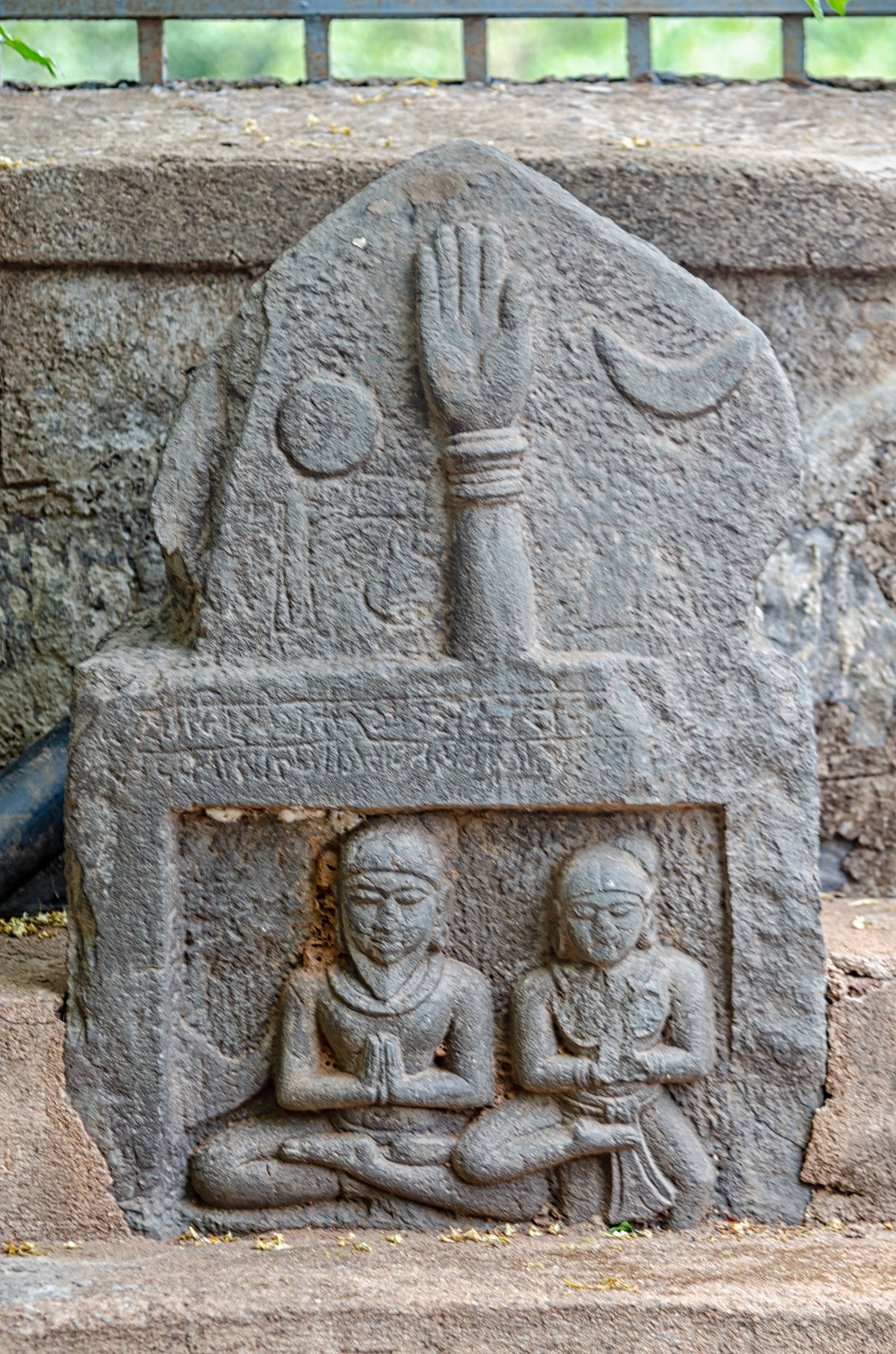
Madwa Mahal, Sati Stone. Photo Credit: Anzaar Nabi.
The site is surrounded by numerous memorial stones around its circumference. The temple gets its name from the 16-pillared open mandapa- madhwa being a corruption of mandapa. Another version states that the temple got its name from the style of the mandapa which resembles a wedding shamiana (awning or tent). For this reason the temple is also called Dulha Dev. However, It is hard to verify the objectivity of these tales.
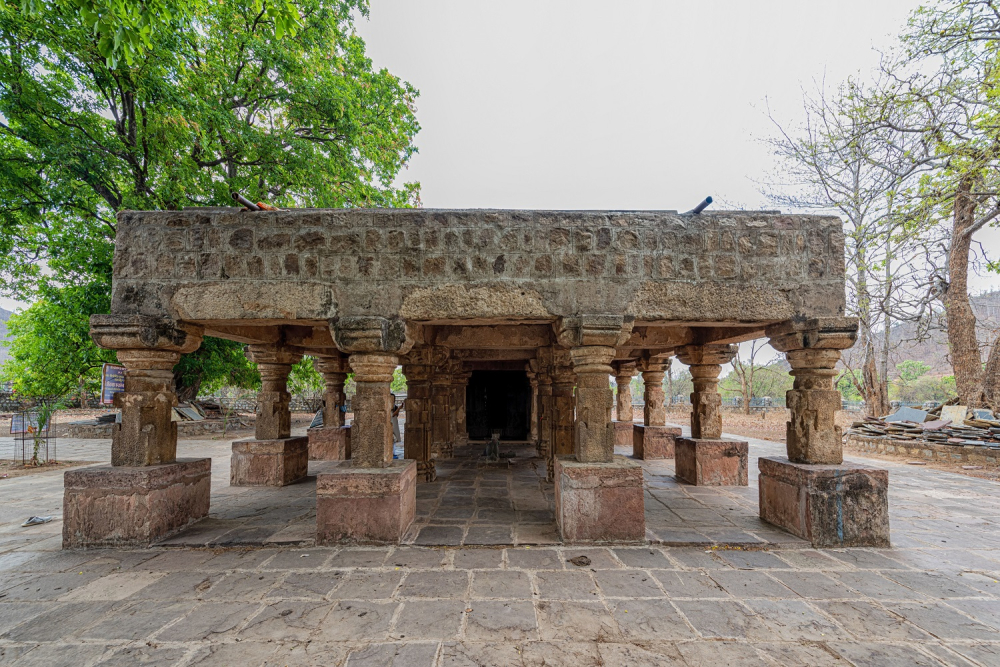
Madwa Mahal, Mandapa. Photo Credit: Anzaar Nabi
The time-period and patron of the temple is debatable. while some say that the temple was built by Ambikadevi, wife of a local Naga king Ramachandra in the 15th century. Local legends state that the temple stands as a memorial to the wedding of a Naga king and a Haihaya queen, whose names are not known. The temple reveals a historical evidence on its dating and patron. An inscription from the temple- now in the Ghasidas museum (Raipur) mentions Gopaladev, a Naga king in 1088 CE. Perhaps Gopaladev was the patron of Madwa Mahal. However, drawing firm conclusions in this regard seems impossible.
On plan, the Madwa Mahal consists of a mandapa and an unusual grabhagrha, which is a level below the mandapa. The mandapa consists of 16 stout pillars with square bases, hexagonal necks and circular tops supported by cushioned capitals. The cushioned capitals are carved with tiny load bearers. The centre is occupied by a seated Nandi (the vehicle of Siva). The ceiling above exhibits a lotus panel.
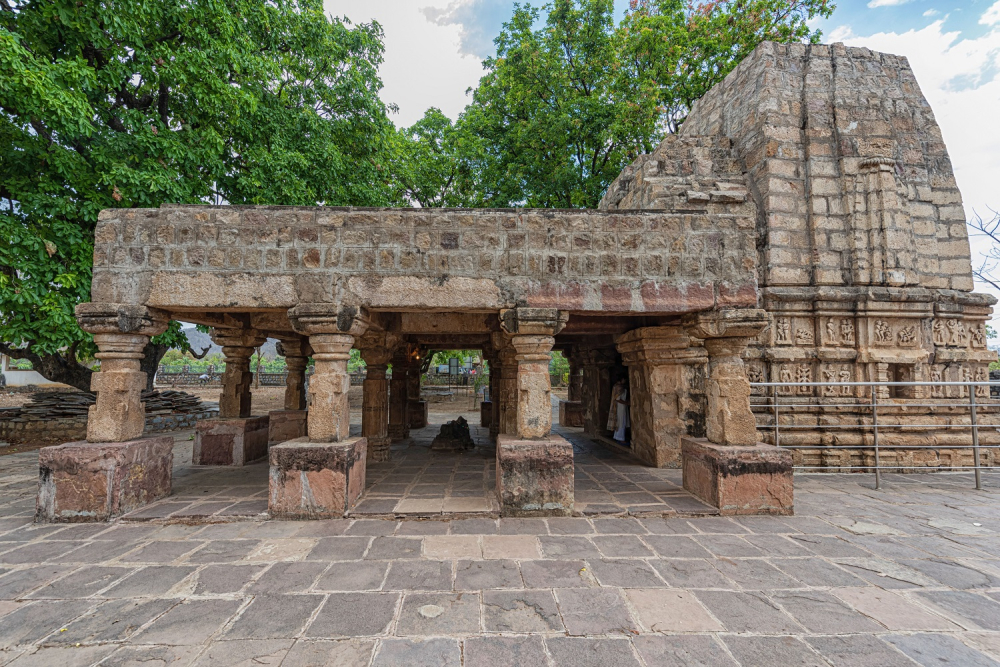
Madwa Mahal, North View. Photo Credit: Anzaar Nabi
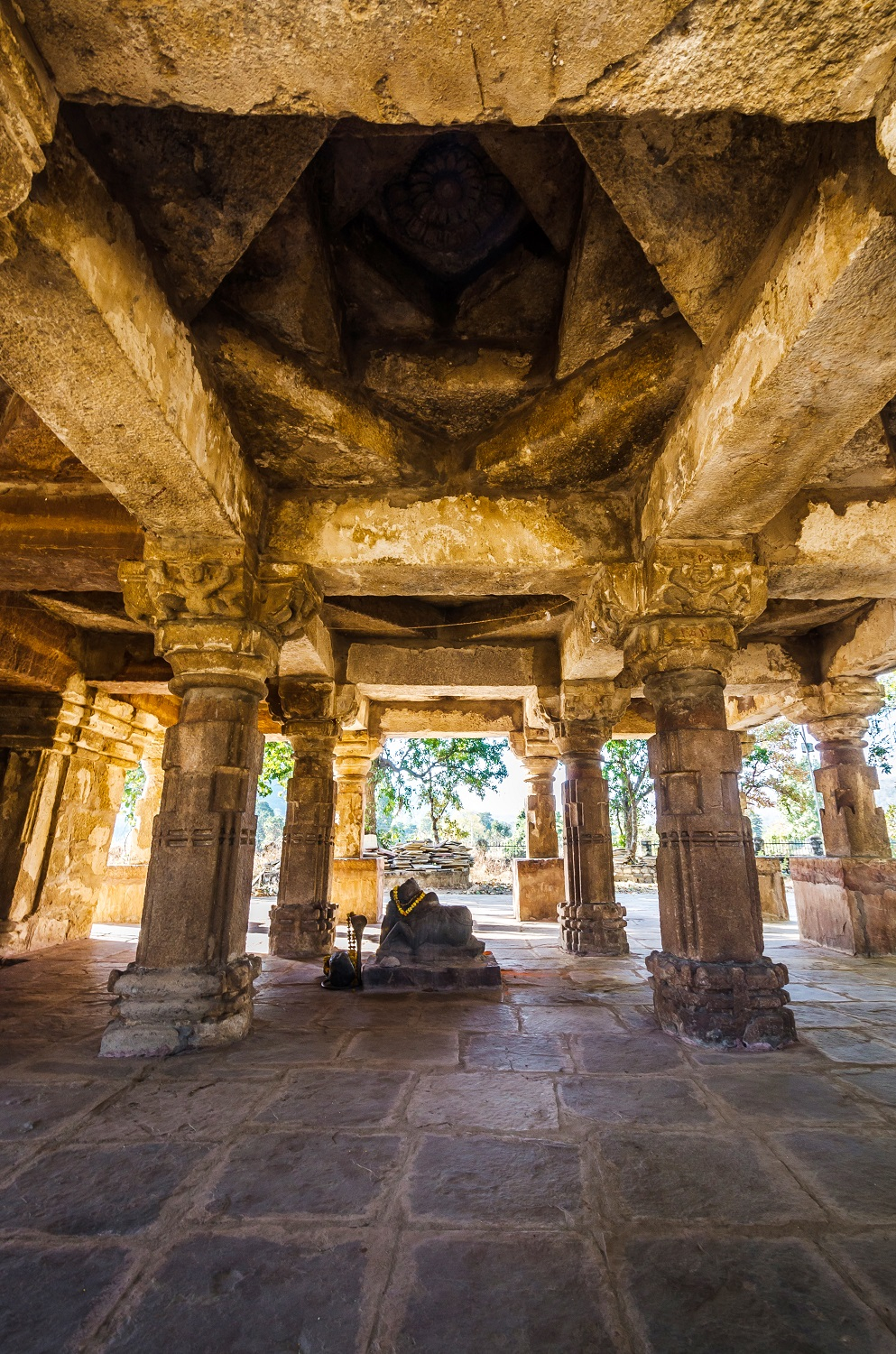
Madwa Mahal, Mandapa. Photo Credit: Anzaar Nabi.
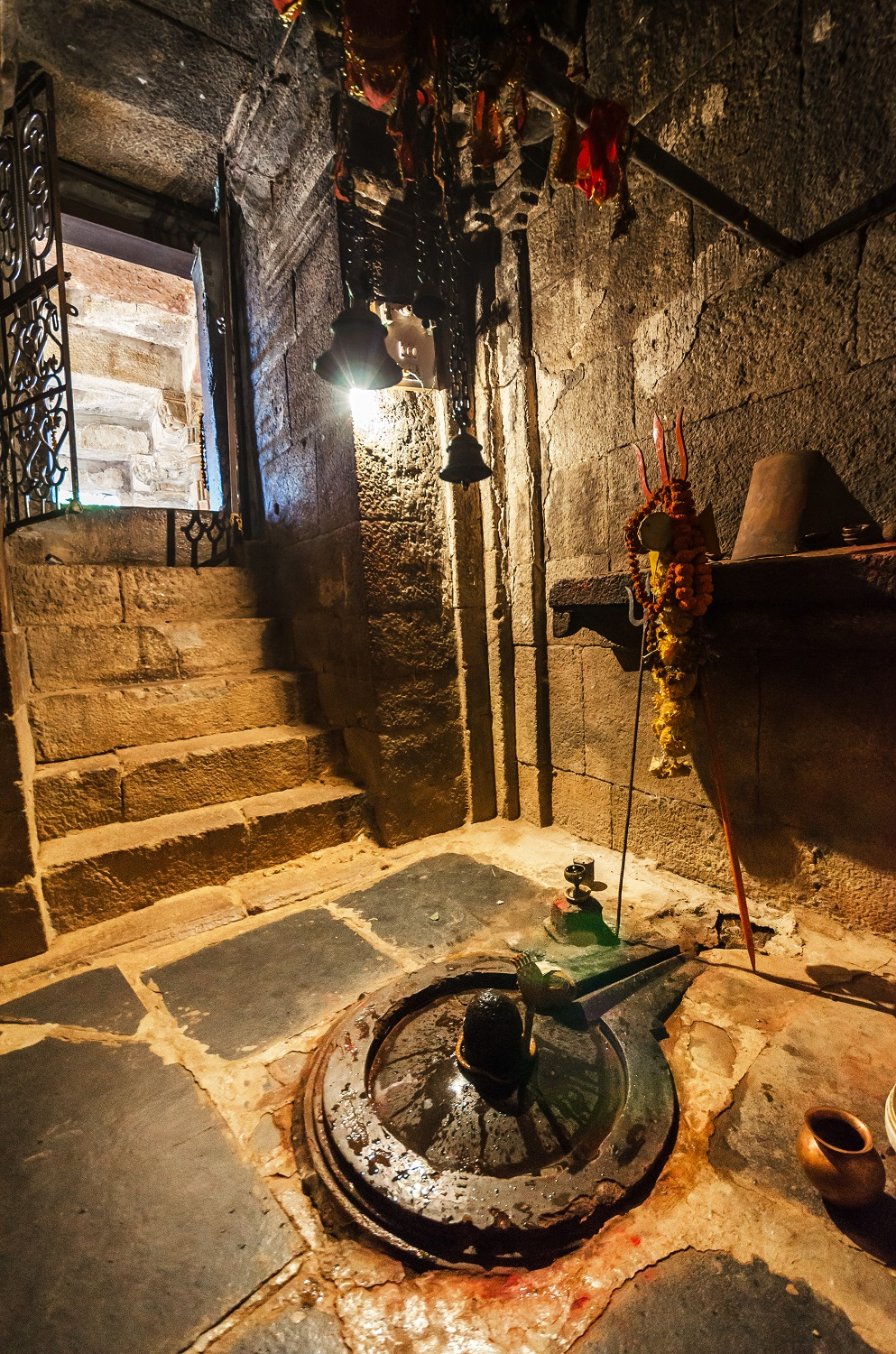
Madwa Mahal, Stairs Leading to Garbhagrha. Photo Credit: Anzaar Nabi.
On elevation, the three-course base moulding rises into a Nagara shikhara similar in form to the Cherki Mahal. The pyramidal superstructure (shikhara) has crude outward projections along its vertical lengths on all four sides resembling an early latina (spire) style. The superstructure reveals early form of sukanasa antefix. Since, the temple has no antarala (antechamber) the antefix does not serve its architectural purpose. It just acts as a motif on the superstructure showing the development of sukanasa antefix.
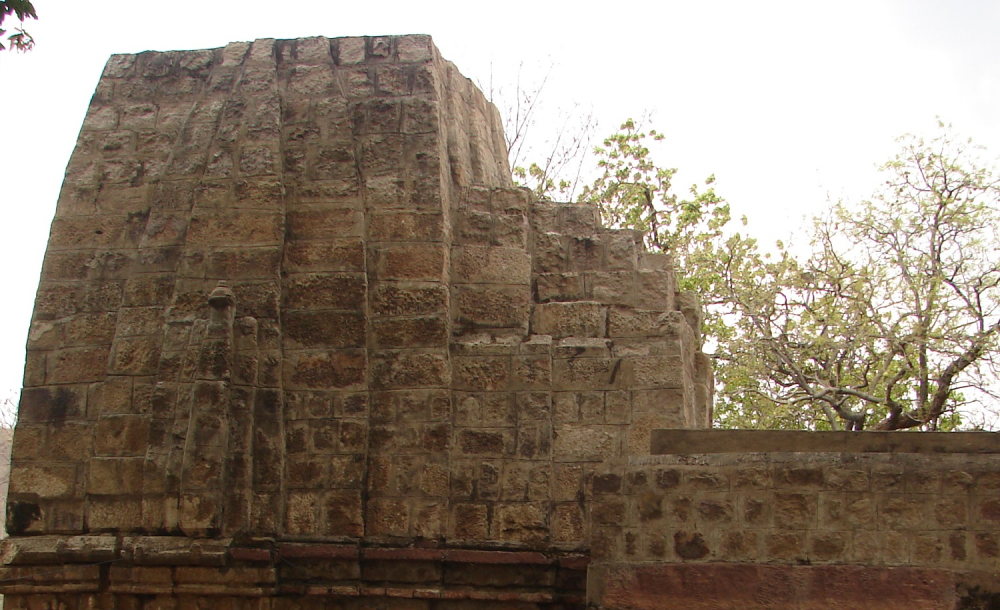
Madwa Mahal, Shikhara. Photo Credit: Rohit Rajak.
The temple is minimally carved on the north, west and south faces of the garbhagrha. The outer walls of the garbhagrha depict figures playing musical instruments and couples in act of sexual play. What makes the the placement of erotic couples interesting is that it is not concealed between the junction walls or at a higher level.
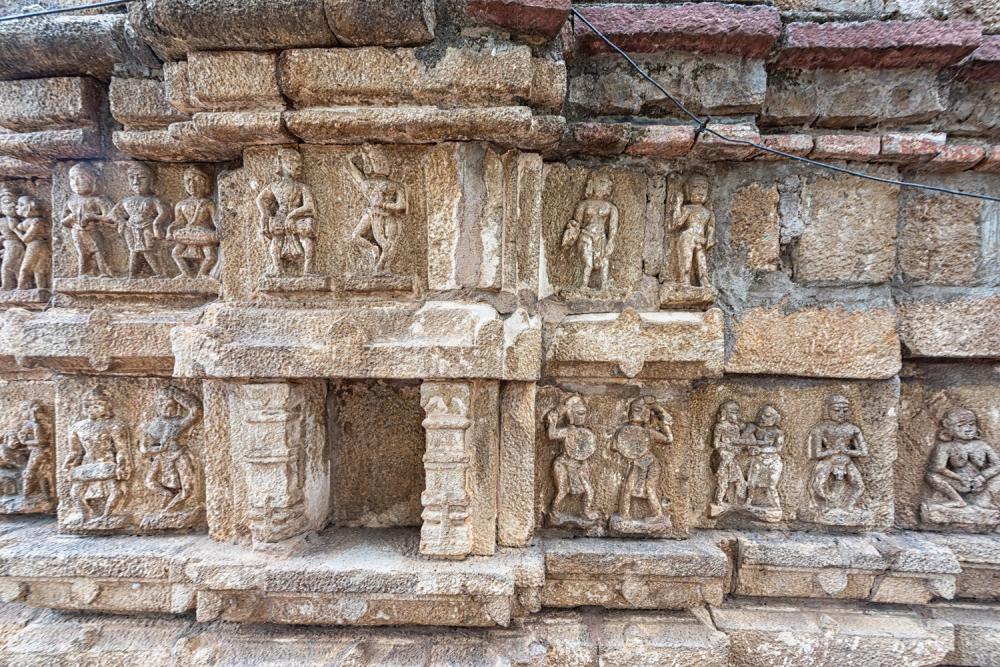
Madwa Mahal, Garbhagrha, Figures Playing Musical Instruments. Photo Credit: Anzaar Nabi.
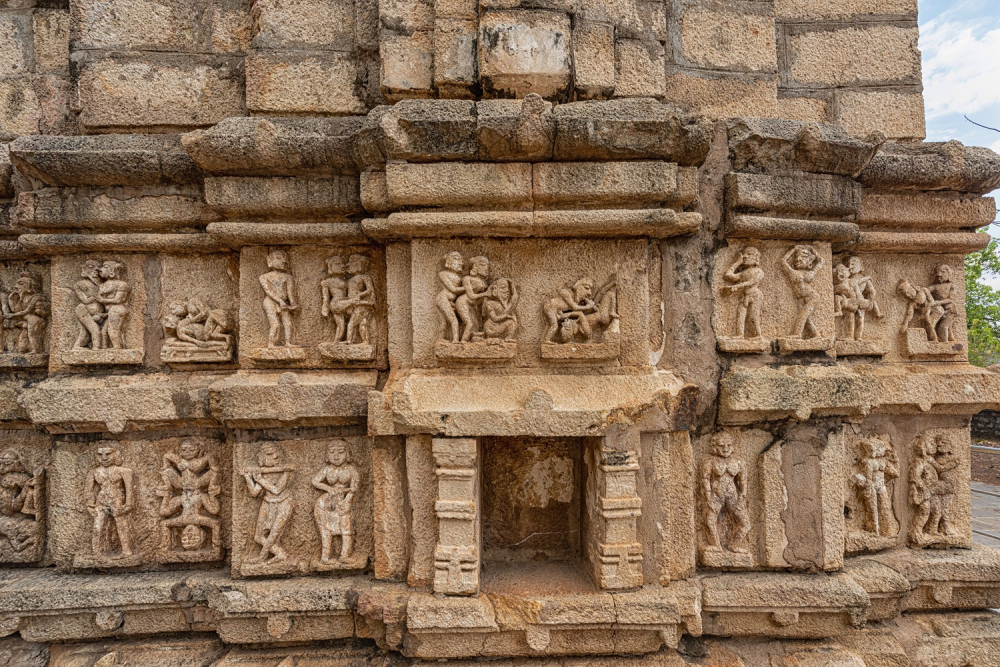
Madwa Mahal, Garbhagrha, Erotic couples. Photo Credit: Anzaar Nabi.
They are carved on the most visible spaces- in the path of circumambulation, which increases the number of audience manifold. It is possible that these sculptures served some ritualistic purpose, however, one can never be too sure. The temple has no sculptural programme.
The garbhagrha of the temple has a Sivaling as its altar image.
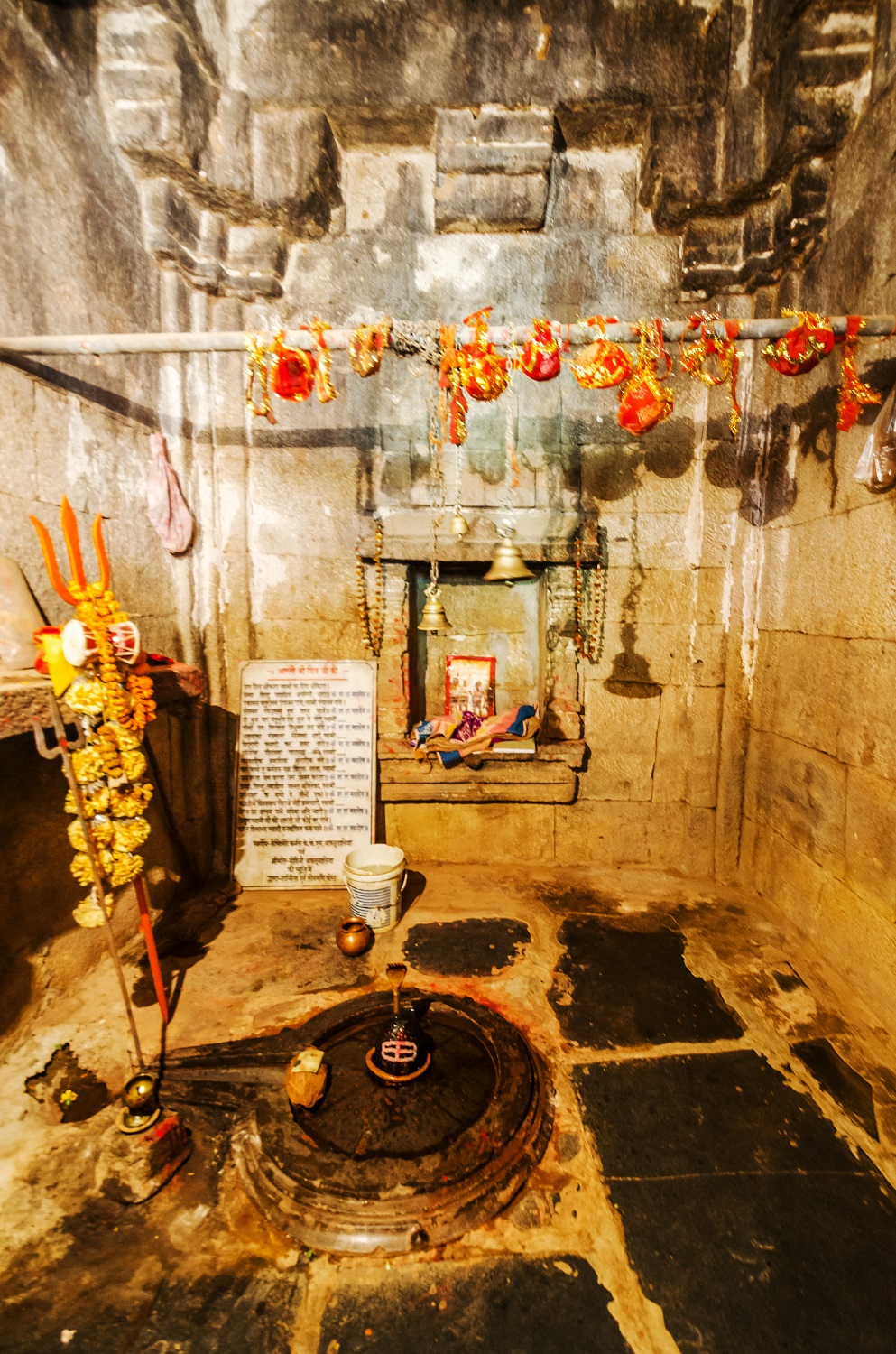
Madwa Mahal, Garbhagrha, Sivalinga. Photo Credit: Anzaar Nabi.
A stick placed across the width of the garbhagrha carries enveloped coconuts hung by devotees while registering their vows. Although, the altar image makes Madwa Mahal a Siva shrine, the originality of the linga remains dubious. Moreover, the sculptures do not provide any clue in this regard.
The numerous memorial stones scattered around the circumference of Madwa Mahal alongside the local legend that attests it as a memorial shrine commemorating the wedding of a Naga king and a Haihaya queen indicates to the possibility that Madwa Mahal was not dedicated to a particular Puranic deity is high. Perhaps it was built as an independent monument- a memorial shrine celebrating and memorialising a royal wedding. The fact that the sculptures of the temple do not carry a strong cultic affiliation bolster the possibility of Madwa Mahal being a memorial monument given the shape of a temple.
This content has been created as part of a project commissioned by the Directorate of Culture and archaeology, Government of Chhattisgarh to document the cultural and natural heritage of the state of Chhattisgarh.
